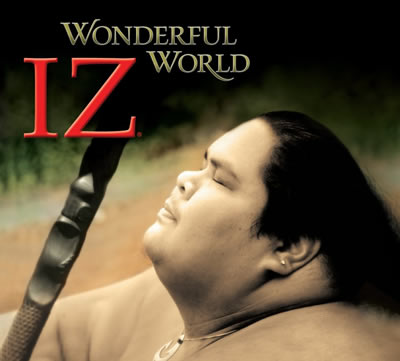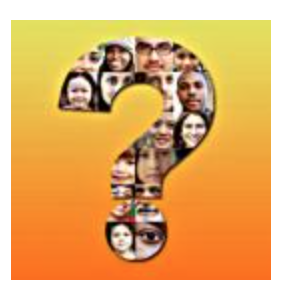Lesson 3: Culture and Mental Illness
Attention
Three questions that may not be easily answered:
The meaning of life,
The definition of reality,
The relationship of nature to nurture.

While writing this introduction to Lesson 3, I, Joel Goodstat, am listening to lyrics and music by Israel Kamakawiwo'ole, Iz for short.
I am being transported cognitively and emotionally to thoughts and feelings from childhood through music.
Iz performing Somewhere Over the Rainbow
Why does music "move" us so?
Is it because it is a message sent over time by a given culture? In this instance Iz's sweet and gentle interpretations of classic pieces. He and I, same brain, same auditory systems, BUT, different time and place. Our roots differ. This represents a personal comparison of how he grew up in a very different culture (Hawaii) than most of us did.
This Lesson will be about the impact of culture in the field of mental health.
Learning Outcomes
Upon completion of this lesson's material, students will be able to:
- Define culture, ethnicity, and race.
- Explore how culture and mental health coincide
- Define cultural competence
Teaching
Culture, Ethnicity, Nationality and Race
These terms are often used interchangeable but each word has it's own meaning. The following links provide information about the differences:
Ethnicity, Nationality, Race, Identity, Culture & Heritage (E.N.R.I.C.H.) LINK: https://djaunter.com/enrich/
What is the Difference between Race and Ethnicity? LINK: https://www.livescience.com/33903-difference-race-ethnicity.html
Race vs. Culture video (0:49 minutes): https://www.youtube.com/watch?v=3n65v43oqFM
Race vs. Ethnicity
Race refers to a person's physical characteristics, such as bone structure and skin, hair, or eye color. Ethnicity, however, refers to cultural factors, including nationality, regional culture, ancestry, and language.
An example of race is brown, white, or black skin (all from various parts of the world), while an example of ethnicity is German or Spanish ancestry (regardless of race) or Han Chinese. Your race is determined by how you look while your ethnicity is determined based on the social and cultural groups you belong to. You can have more than one ethnicities but you are said to have one race, even if it's "mixed race" (from http://www.diffen.com/difference/Ethnicity_vs_Race).
As part of our m-Learning Initiative (Mobile-Learning Initiative) we have selected specific iPad applications, called apps, and integrated them into some of our lessons. Apps are not included in every lesson but when they are included you are expected to download the app and give it a try. There will be instructions regarding how the instructor wants you to use the app. Each time we integrate one or more apps into a lesson you will see a box like the one below to flag for you that this lesson includes iPad Integration. If you have difficulty downloading an app please let your instructor know because if you are having trouble some (or all) of your classmates might be having trouble too.
For this activity you are going to download the free Who am I app. This app is a game played between two people. The objective is to open up a dialog about race between a parent and a child. Please ask another person (it does not have to be a child) to play the game with you. The game is played like Guess Who. You select a picture of a person. Then the other person (the guesser) needs to ask you close ended questions. You can only answer yes or no to the questions. They touch each person they eliminate. Once they decide who you selected they touch that picture for longer, two seconds to make the selection. Please be open minded about how our differences make us unique and beautiful inside and out. Let the instructor know if you have any issues with the app. Who am I https://itunes.apple.com/us/app/who-am-i-race-awareness-game/id372945923?mt=8 ____________________________________________________________________________________ This app is called myHomework Student Planner. We have included it here since it may be helpful for some of you as you begin to explore how best to organize and keep track of your work across the semester. This app is an optional download but worth checkign out as you set up your own homework organizing processes. And, your classmates will confirm, you do need a way to organize when your homework is due and to track when each item is completed. myHomework Student Planner https://itunes.apple.com/us/app/myhomework-student-planner/id303490844?mt=8 |
How does culture, race and ethnicity affect the work we do with clients?
Read this article about the connection between culture, race, ethnicity and mental health treatment: http://www.ncbi.nlm.nih.gov/pmc/articles/PMC4228688/. From the National Alliance of Mental Illness (NAMI) http://www.nami.org/Find-Support/Diverse-Communities.
Diverse Communities
A person’s beliefs, norms, values and language affect how we perceive and experience mental health conditions. Cultural differences can influence whether or not we seek help, what type of help we seek, what coping styles and supports we have and what treatments might work for us. Diverse communities face many barriers such as higher levels of stigma, misinformation about mental health and language that prevent them from receiving care. Even when they are able to access treatment, these communities often receive poorer quality care due to lack of cultural competence, bias and inadequate resources. This results in misdiagnosis, dropping out of treatment and a longer time to achieve recovery.
However, when a mental health professional does take into account cultural needs and differences, outcomes can be significantly improved. Although everyone’s experience is unique, knowing about research, mental health perspectives and challenges specific to your community can help you get better treatment.
Open this link which shares information from NAMI for individuals who identify themselves as Latino: http://www.nami.org/Find-Support/Diverse-Communities/Latino-Mental-Health. Please note video will play in Spanish only but the text information below the video provides a lot useful information about how mental health conditions affect Latino communities.
Read this link (and watch the video) which shares information from NAMI for individuals who identify themselves as African American: http://www.nami.org/Find-Support/Diverse-Communities/African-American-Mental-Health
I know these two links and video have some similarities but I felt it was important to review both since NAMI worked hard to bring in specific information that is directed to each of the different groups. As future mental health workers you will encounter clients from all different ethnic, cultural and racial backgrounds. It is very important that you always bring a level of cultural competency to all of the work that you do.
Cultural competence is defined as a set of values, behaviors, attitudes, and practices within a system, organization, program or among individuals and which enables them to work effectively cross culturally. Further, it refers to the ability to honor and respect the beliefs, language, interpersonal styles and behaviors of individuals and families receiving services, as well as staff who are providing such services. Striving to achieve cultural competence is a dynamic, ongoing, developmental process that requires a long-term commitment from individuals and systems (Denboba, D. (1993). MCHB/DSCSHCN Guidance for Competitive Applications, Maternal and Child Health Improvement Projects for Children with Special Health Care Needs. U.S. Department of Health and Human Services, Health Services and Resources Administration).
Watch this video about Culture and Mental Health:
Culture, Mental Health and Ethnicity ( https://www.youtube.com/watch?v=Ns1aVO5X6Co) (2:18 minutes)
Watch this video called:
Challenges and Rewards of a Culturally-Informed Approach to Mental Health( https://www.youtube.com/watch?v=VrYmQDiunSc) (17:57 minutes)
I have focused this lesson on culture as it relates to the beliefs, values, norms and practices that are learnt and shared generation by generation. There are also other types of cultures around us such as a culture within a work environment that defines how employees should interact with each other as well as their superiors and subordinates. Then you have a culture in certain settings that defines how people should interact with each other. I came across this article this week regarding the culture of negativity in social media and thought it was an interesting twist on the concept of culture. Here is an article about the good and bad of social media, which know is affecting our current culture in positive and negative ways.
Please read these two articles:
What Impact Has Social Media Truly Had On Society
Read more at http://www.business2community.com/social-media/impact-social-media-truly-society-0974685#uuKd5QXWDE68Coms.97
Assessment
Lesson 3 Discussion (for online course only)
We each enter the field of mental health with our own positive and negative experiences regarding race, culture, and ethnicity. Please share an experience that involved one or more of these factors and how you dealt with it. Then share how you can use that experience to help you with current and future clients with mental health issues who may come from all different backgrounds.
Lesson 3 Quiz
1. What is the difference between race, culture and ethnicity? Why is this important when working with clients/consumers who have mental health issues?
2. What are you thoughts about the impact of social media on our current culture here in Maine and across the United States?


